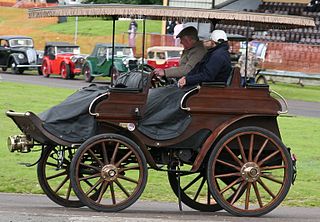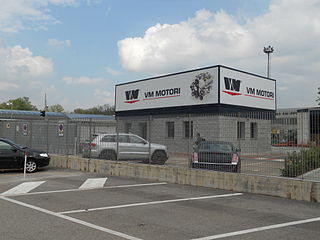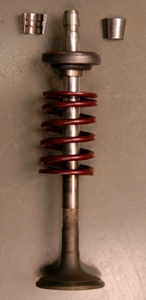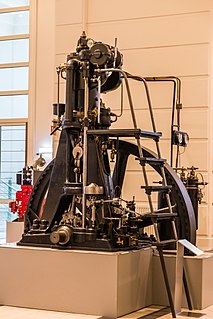
A V12 engine is a V engine with 12 cylinders mounted on the crankcase in two banks of six cylinders each, usually but not always at a 60° angle to each other, with all 12 pistons driving a common crankshaft. Since each cylinder bank is essentially a straight-six which is by itself in both primary and secondary balance, a V12 inherits perfect primary and secondary balance no matter which V angle is used, and therefore it needs no balance shafts. A four-stroke 12 cylinder engine has an even firing order if cylinders fire every 60° of crankshaft rotation, so a V12 with cylinder banks at 60° or 180° will have even firing intervals without using split crankpins. By using split crankpins or ignoring minor vibrations, any V angle is possible. The 180° configuration is usually referred to as a "flat-twelve engine" or a "boxer" although it is in reality a 180° V since the pistons can and normally do use shared crankpins. It may also be written as "V-12", although this is less common.

The straight-six engine or inline-six engine is an internal combustion engine with the cylinders mounted in a straight line along the crankcase with all the pistons driving a common crankshaft.

The Peugeot 405 is a large family car released by the French automaker Peugeot in July 1987, and which continues to be manufactured under licence outside France, having been discontinued in Europe in 1997. It was voted European Car of the Year for 1988 by the largest number of votes in the history of the contest. About 2.5 million vehicles have been sold worldwide, both in LHD and RHD, as a sedan and station wagon.
Coventry Victor was a British motorcycle and car manufacturer. Originally Morton & Weaver, a proprietary engine manufacturer in Hillfields, Coventry, founded in 1904, the company changed its name to Coventry Victor Motors in 1911, the company closed in 1971.

Argyll was a Scottish motor car marque manufactured from 1899 to 1932, and again from 1976 to around 1990.
Armstrong Siddeley was a British engineering group that operated during the first half of the 20th century. It was formed in 1919 and is best known for the production of luxury vehicles and aircraft engines.

Arrol-Johnston was an early Scottish manufacturer of automobiles, which operated from 1895 to 1931 and produced the first automobile manufactured in Britain. The company also developed the world's first "off-road" vehicle for the Egyptian government, and another designed to travel on ice and snow for Ernest Shackleton's Nimrod Expedition to the South Pole.

VM Motori S.p.A. is an Italian diesel engine manufacturing company which is wholly owned by Fiat Chrysler Automobiles through its subsidiary Fiat Group Automobiles. VM headquarters and main production facilities are located in Cento, in Emilia-Romagna, Italy.

Ruston & Hornsby was an industrial equipment manufacturer in Lincoln, England founded in 1918. The company is best known as a manufacturer of narrow and standard gauge diesel locomotives and also of steam shovels. Other products included cars, steam locomotives and a range of internal combustion engines, and later gas turbines. It is now a subsidiary of Siemens.

Albion Motors was a Scottish automobile and commercial vehicle manufacturer.
Paxman is a major British brand of diesel engines. Ownership has changed on a number of occasions since the company's formation in 1865, and now the brand is owned by MAN SE, as part of MAN Diesel & Turbo. At its peak, the Paxman works covered 23 acres (9.3 ha) and employed over 2,000 people. Engine production is still primarily based at Paxman's Colchester works. Early Paxman diesel engines carried the name Paxman Ricardo.

Willys-Knight is an automobile that was produced between 1914 and 1933 by the Willys-Overland Company of Toledo, Ohio.

The Knight engine was an internal combustion engine, designed by American Charles Yale Knight (1868-1940), that used sleeve valves instead of the more common poppet valve construction.

Rolls-Royce was a British luxury car and later an aero-engine manufacturing business established in 1904 by the partnership of Charles Rolls and Henry Royce. Building on Royce's reputation established with his cranes they quickly developed a reputation for superior engineering by manufacturing the "best car in the world". The First World War brought them into manufacturing aero-engines. Joint development of jet engines began in 1940 and they entered production.

Ricardo plc is a British publicly listed company named after its founder, Sir Harry Ricardo, originally incorporated and registered as Engine Patents Ltd. in 1915. Since 1919 the headquarters have been at Shoreham-by-Sea, West Sussex. Ricardo develops engines, transmissions, vehicle systems, intelligent transportation systems (ITS) and hybrid & electric systems. The industries served are in transportation, defence and clean energy.

British Polar Engines is a manufacturer of diesel engines based in Glasgow, Scotland. The company has over seventy years' experience in the manufacture and supply of spare parts for diesel engines. The engine and company take their name from the engine supplied to Amundsen's Fram, from which he conquered the South Pole.
W.H. Dorman & Co Ltd was a company formed by William Henry Dorman in 1870 making cutting tools for the footwear industry. It diversified into other tools including grinders, and in 1903 into internal combustion engines. This was to be its main product up to the point where it was taken over by the English Electric Company in 1961, though the Dorman name continued as a diesel engine trademark until 1995. William Henry Dorman retired in 1911, and died in 1926.


















